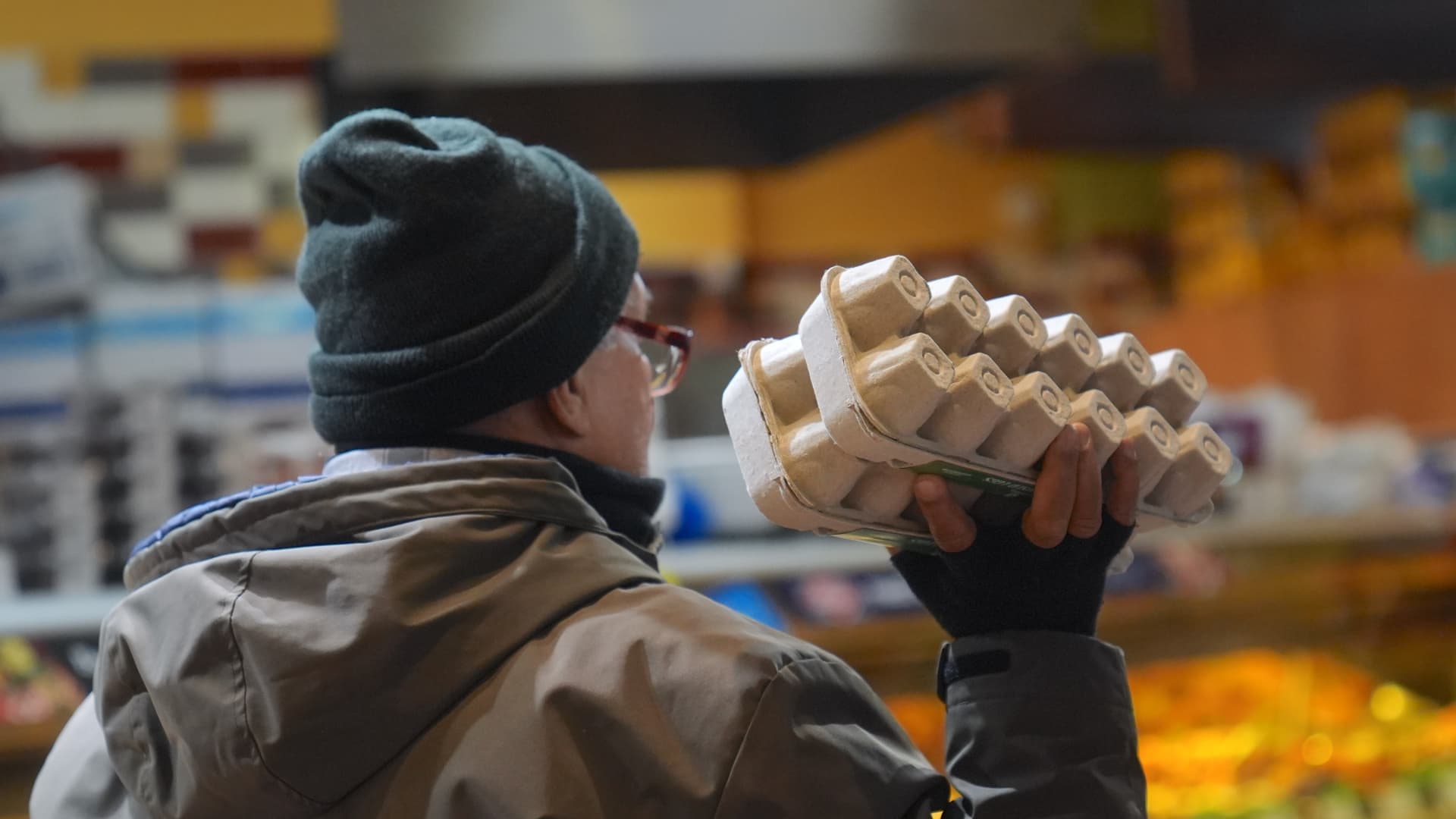A customer, holding a carton of eggs at a supermarket, in United States on Dec. 20, 2024.
Secuk Ancar | Anadolu | Getty Images
This report is from today’s CNBC Daily Open, our international markets newsletter. CNBC Daily Open brings investors up to speed on everything they need to know, no matter where they are. Like what you see? You can subscribe here.
What you need to know today
U.S. government shutdown suspended
The U.S. government narrowly avoided a shutdown after President Joe Biden signed a stopgap government funding bill on Saturday. President-elect Donald Trump and Elon Musk thwarted an initial, negotiated funding plan Wednesday by harshly criticizing its provisions, and specifically insisted on suspending the U.S. debt limit for two years.
Slight chill in price increases
U.S. headline inflation in November rose just 0.1% from October, according to the personal consumption expenditures price index. On an annual basis, prices increased 2.4%. Both readings were 10 basis points lower than expected. Core inflation also came in 10 basis points below forecast. The PCE is the U.S. Federal Reserve’s preferred gauge of inflation.
Markets in the U.S. bounced
On Friday, the S&P 500 rose 1.09%, the Dow Jones Industrial Average added 1.18% and the Nasdaq Composite climbed 1.03%. But all indexes fell on the week. The pan-European Stoxx 600 fell 0.88% to end the week 1.9% lower. Novo Nordisk shares plunged 17.8% after the Danish pharmaceutical company reported disappointing trial results for a new weight loss drug.
CEOs see the door
Blue-chip companies, such as Boeing, Intel and Starbucks, announced changes in their chief executive officers this year. They’re not alone. There were 327 CEO departures in U.S. public companies this year through November, according to outplacement firm Challenger, Gray & Christmas. That’s the highest level since the firm started tracking data in 2010.
[PRO] Will Rudolph’s red nose outshine Santa?
After a few rocky weeks of trading, stocks are poised to end December in the red. But the Santa Claus rally, traditionally occurring on the last five trading days of the year and the first two of the next, could reignite seasonal cheer. In data going back to 1969, the S&P has added 1.3% on average, according to the Stock Trader’s Almanac.











